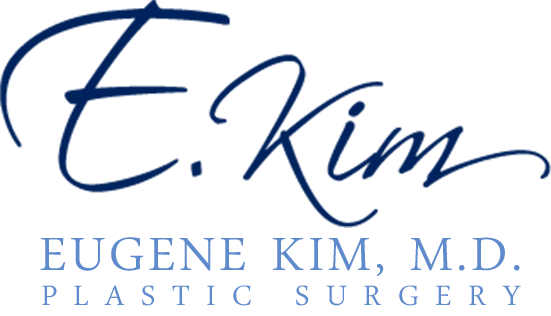 The nasolabial angle comprises two lines which are obvious when viewing the face in profile. The first line extends from the nose tip to the area above the upper lip. The second line runs from the upper lip to the bottom of the nose where the nostrils divide.
The nasolabial angle comprises two lines which are obvious when viewing the face in profile. The first line extends from the nose tip to the area above the upper lip. The second line runs from the upper lip to the bottom of the nose where the nostrils divide.
The rotation of the nose tip and nose projection affects the degree of the nasolabial angle. The surgeon will try to develop a 90- to 95-degree nasolabial angle in males and a 100- to 105-degree angle in females for most patients. They can adjust the projection and rotation of the nose to refine this angle.
Board certified plastic surgeon Dr. Eugene Kim provides rhinoplasty to patients in Beverly Hills, Los Angeles, Santa Monica, West Hollywood, CA, and surrounding locations.
Adjusting the CLA
The columella-labial angle (CLA) is an important metric to be evaluated in nose reshaping surgery patients to accomplish beautiful results.
An increase in this angle may lead to an upward tilt of the nasal base along with an associated reduction in the length of the nose. The differences in nasal anatomies often cause this aspect to be overlooked leading to undesirable results.
The columella and upper lip share a complex relationship. It is difficult to maintain a particular angle in nose surgery patients, and surgeons use various methods such as making adjustments to the nasal cartilage, suturing techniques, and cartilage grafts to stabilize this angle.
The shape of the columella depends on the caudal septum, nasal spine, and medial crura of the lower lateral cartilage. Therefore, these factors contribute to determining the CLA.
From a cosmetically appealing standpoint, the most appropriate angle is 100- to 105-degree in women and 90- to 95-degree in men on profile view. The normal columellar display is between 2 mm and 4mm. A substantial hanging columella can significantly impact the appearance of the nose.
Tent Pole Grafting
The ‘tent pole graft’ is an innovative technique used to define and preserve the CLA. This graft works in a similar manner to the septo-columellar interpositional grafts.
But this technique does not require the dissection or delineation of the upper cartilages from the septum to place the grafts. The tent pole graft is used in difficult revision surgeries and in patients whose nasal tip projections require a significant increase.
In this technique, the surgeon fixes a piece of cartilage to the columellar strut in the most appropriate position. Subsequently, they determine the optimal angle by attaching the posterior end of the graft temporarily with a needle to the supratip cartilaginous dorsum.
After determining the desired angle, the surgeon sutures the graft to the dorsum. This graft allows an extensive columellar strut to remain stable and prevents the tip from falling back. The tent pole graft technique helps maintain the nasal tip as well as allows the development of the desired CLA.
This technique is suitable for challenging revision rhinoplasty cases. On top of this, patients who undergo tip or columella lengthening and those who require nasal length preservation due to a short nose can benefit from this technique as well. The surgeon can maneuver the graft to adjust the nasolabial or CLA angle easily.
In case it is not possible to place the septal extension graft or very difficult to fix it, this technique is especially useful. For example, it can be useful for patients with a mild to moderate short nose.
Cosmetic surgeon Dr. Eugene Kim receives patients from Beverly Hills, Los Angeles, Santa Monica, West Hollywood, CA, and nearby areas for rhinoplasty.
Click here see more plastic surgery procedures and treatments performed by Board Certified Plastic Surgeon, Dr. Eugene Kim on patients in Beverly Hills, Los Angeles, West Hollywood, Santa Monica and surrounding areas or call 310-271-6996 to schedule a consultation.
